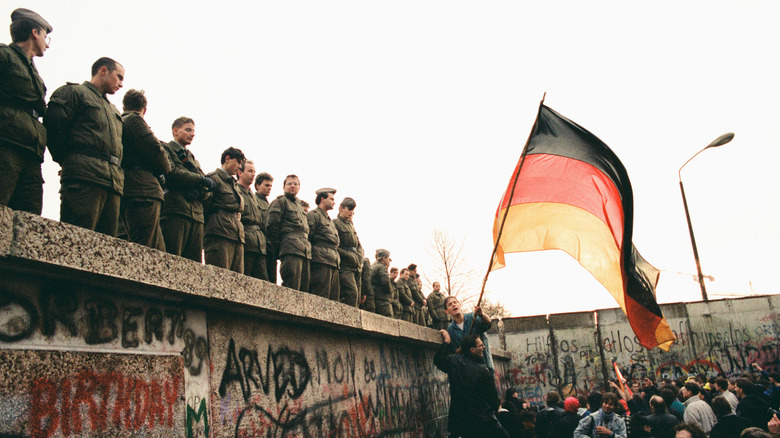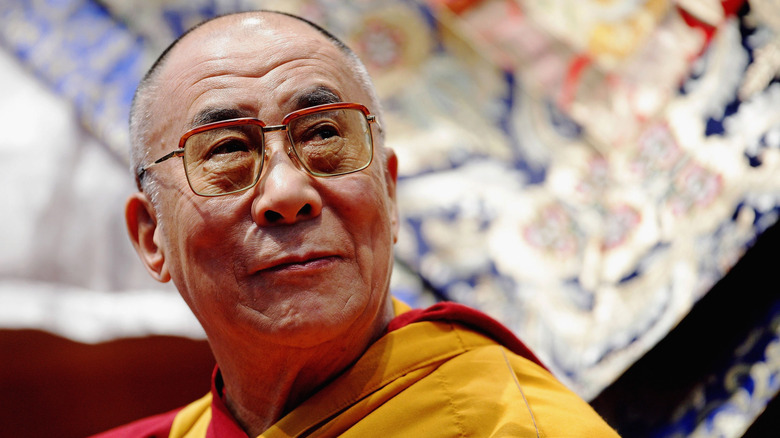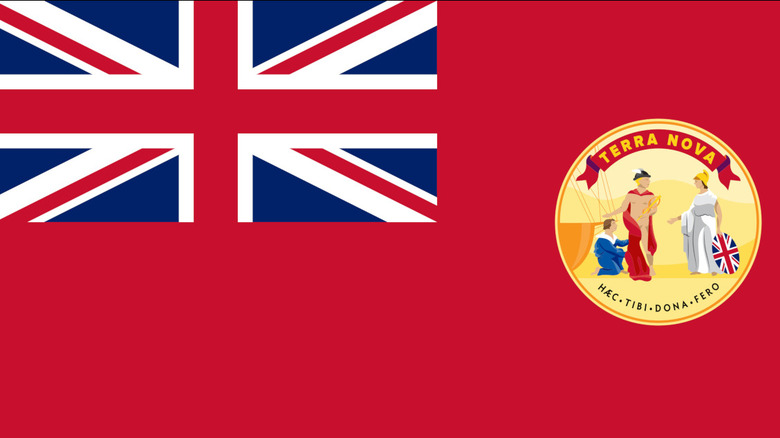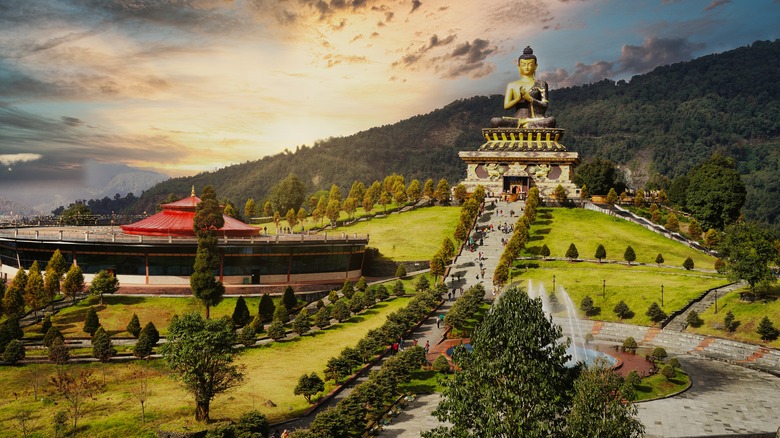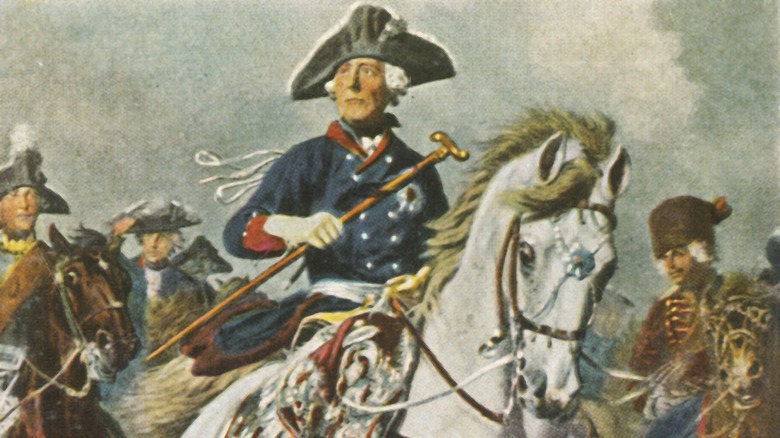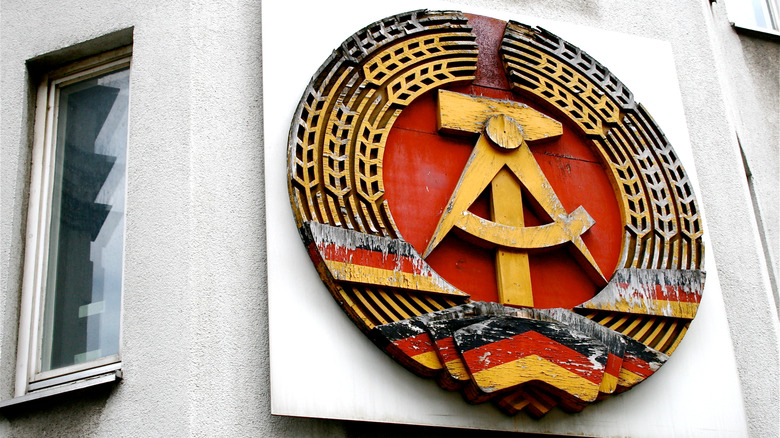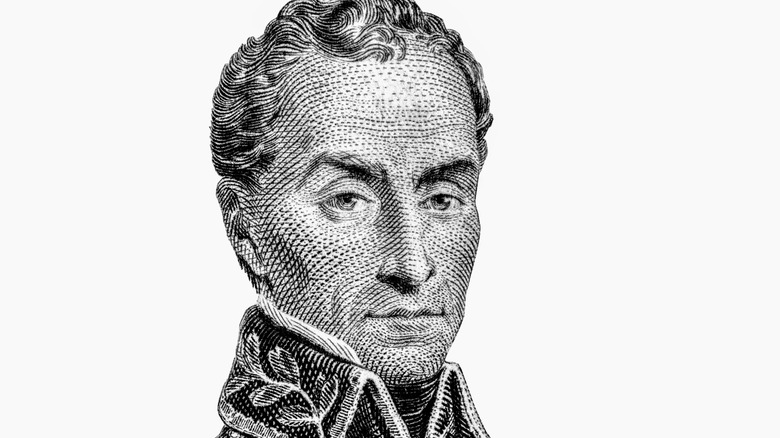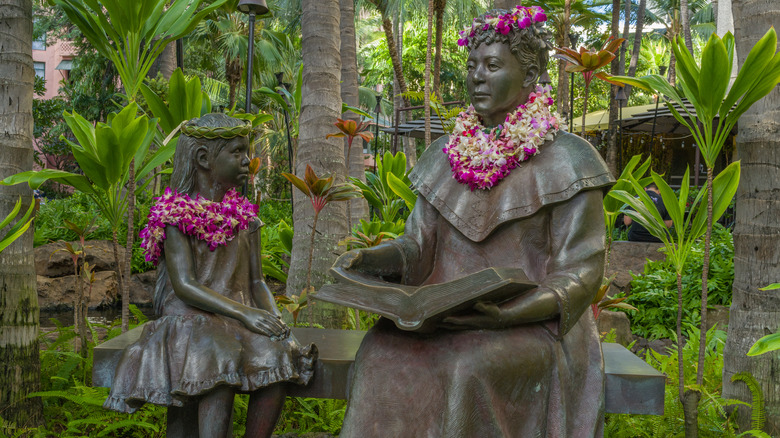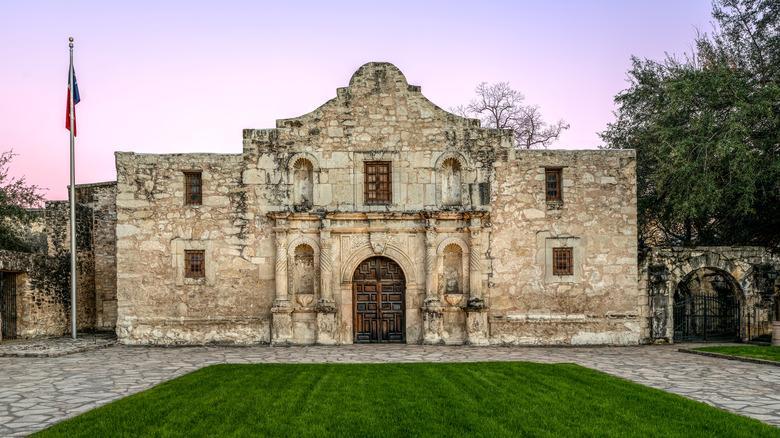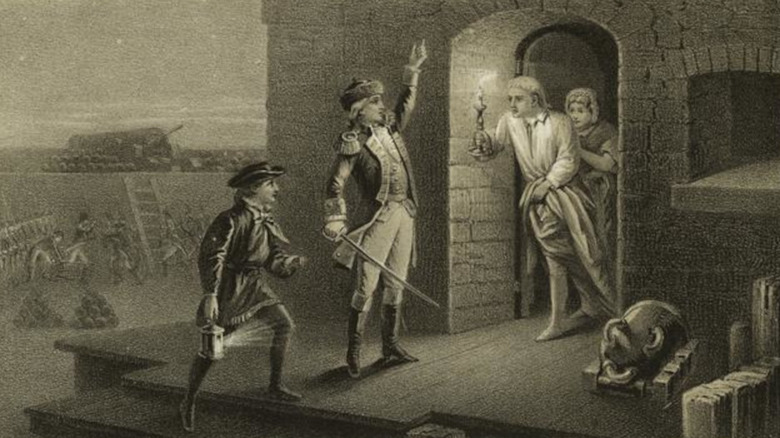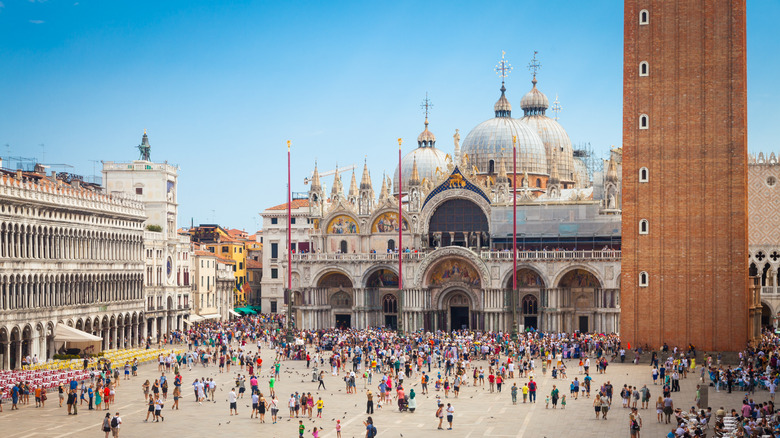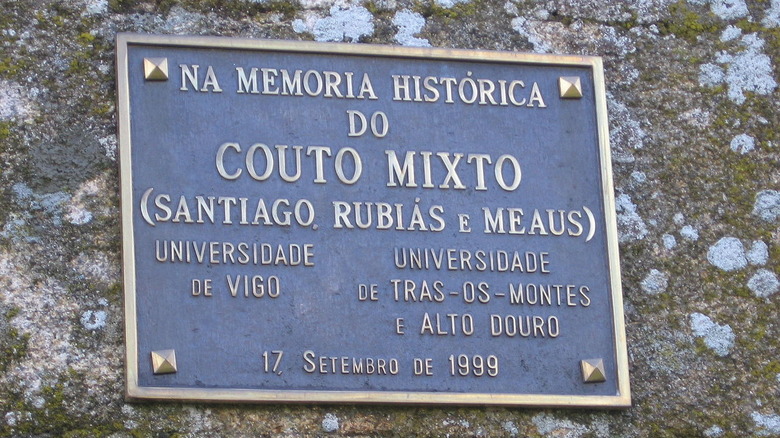Why These Countries Don't Exist Anymore
We tend to think of countries as sort of permanent. That's because countries tend to exist a lot longer than we do, and changing borders requires a lot of blood, sweat, and tears. It's usually a lot easier to just change a country internally via the political process or outright revolution than it is to actually erase a border and wipe a country off the map.
While most of the countries that no longer exist are the result of war or similarly catastrophic upheaval, there are some that ceased to exist for more interesting reasons. Sometimes countries were formed via cynical political calculation and never had much chance of survival. Sometimes countries formed as the result of accidents of international law, enjoying a strange (and sometimes surprisingly lengthy) existence until the politics and economics that formed them shifted. And sometimes countries voluntarily cease to exist for their own selfish reasons.
Whatever the cause, the invisible borders that divide us from each other have melted away a surprising number of times. The stories behind these disappearances frequently involve forces that not even entire nations can resist — or at least not resist indefinitely.
Yugoslavia: Doomed from the beginning
As a rule of thumb, whenever conquering powers have created new countries based on little more than political expediency it does not go well. Case in point: Yugoslavia. As noted by Britannica, there have actually been three distinct versions of a country called Yugoslavia, which translates to "Land of the South Slavs." All three were artificial creations that combined ethnically and culturally distinct populations including Serbia, Croatia, Bosnia and Herzegovina, as well as parts of Austria and Hungary.
History Extra explains that the initial Yugoslavia was formed in the wake of World War I, in part because the empires that had once ruled these territories (the Ottoman Empire and the Habsburg monarchy) were gone. BBC History notes that the new nation was initially called the Kingdom of the Serbs, Croats and Slovenes — it became Yugoslavia in 1929. It was never very stable — each distinct group within its borders fought constantly with the others. When World War II broke out Yugoslavia was quickly carved up between Germany and Italy, and when the war ended it emerged as part of Joseph Stalin's communist "Iron Curtain" in Eastern Europe.
This version of Yugoslavia lasted until 1991, when the disparate parts of Yugoslavia began declaring their independence. Eventually Serbia and Montenegro formed a new federation known as Yugoslavia in 1992. This third version lasted just 14 more years; in 2006, Montenegro declared its independence.
Tibet: Still not free
Tibet's history goes back nearly 5,000 years, according to Britannica. During the course of that history, it has enjoyed periods of independence and even regional power, but has also been dominated and controlled by neighboring China for long stretches of time. As noted by NPR, China has controlled Tibet for so much of its history that it officially regards it as part of China. Tibet's period of modern independence between 1913 and 1950 is a "blip" that doesn't count.
Despite China's claims, there's little doubt that during that time, Tibet functioned as an independent nation. According to History, when China's People's Liberation Army invaded Tibet in 1950, the Tibetan government signed a treaty that guaranteed the authority of the Dalai Lama, the country's leader. This implies that China understood Tibet to be a country. For nearly a decade Tibet existed under this arrangement, until increasing unrest led to a crackdown in 1959, ultimately forcing the Dali Lama to flee. China destroyed many of the major monasteries in Tibet and has been accused of attempting to erase its culture and identity. Although the Dali Lama insists that Tibet is an independent country occupied by the Chinese, the fact is Tibet ceased to exist as a separate country in 1959.
Newfoundland: Didn't like the cost of independence
Newfoundland island is the site of the earliest European settlement in the "new world": Viking explorer Leif Erikson established a settlement in the year 1000, according to BBC Travel. Nearly 600 years later it became a British colony. In 1855, as noted by The Newfoundland and Labrador Heritage Website, "responsible government" was instituted in Newfoundland. This essentially made Newfoundland an independent country. Author Greg Malone reports in his book "Don't Tell the Newfoundlanders" that in 1907 Newfoundland was elevated to the status of a dominion, defined by Britannica as "autonomous communities." This put it on equal footing with Canada and Australia as a fully independent nation.
Then World War I hit. According to CBC Documentaries, Newfoundland borrowed an enormous sum of money for its contribution to the war effort. By 1932 they owed Great Britain an astounding $101 million (more than $2 billion today). The tiny country couldn't even pay the interest on the loans. In desperation, Newfoundland gave up its independent status and asked Great Britain to take over again.
For 15 years Newfoundland was a British colony once more. In the mid 1940s, Newfoundland had paid back its debt to Great Britain and rebuilt its economy. According to the CBC, a referendum was held in 1948 to decide whether Newfoundland would become independent again, remain part of Great Britain, or become a province of Canada. The third option passed by just 7,000 votes.
Sikkim: Four hundred years a nation
Sikkim is a small state in India located between Nepal and Bhutan, south of China and Tibet. For centuries Sikkim was a tiny but fiercely independent nation.
As Britannica notes, the Kingdom of Sikkim was established in 1642, and was ruled by a single dynastic family, the Namgyals, for more than 300 years. By the early 19th century the country had come under the thumb of the sprawling British empire, and in 1835 Sikkim ceded the city of Darjiling (or Darjeeling) to the British East India Company. In 1861 Sikkim signed a treaty with the British that established the kingdom as an autonomous "princely state" under British influence.
As noted by author J.R. Subba in his book "History, Culture and Customs of Sikkim," when India won its independence from Great Britain in 1947 a movement to escape British control began in Sikkim, and in 1950 a treaty was signed making the kingdom an Indian Protectorate. As noted by Harvard Ed. Magazine, years of heavy immigration transformed the demographics of this tiny country, resulting in a largely Hindu country controlled by an ancient Buddhist monarchy. In 1975 Indian Prime Minister Indira Gandhi held a referendum which resulted in Sikkim becoming an Indian state and abolishing its monarchy. The referendum passed with 97% of the vote.
Prussia: Ruined by success
According to Britannica, Prussia was always a distinct region in the northern part of Europe, off the coast of the Baltic Sea. It became wholly assimilated into German culture and language by the 17th century. At that point Prussia was a duchy — History Today reports that by 1701, after a series of territorial and political maneuvers, Frederick I of the Hohenzollern managed to have himself declared the first king of Prussia, which became a kingdom. Prussia became a great power in the 19th century.
As noted by History Hit, by the late 19th century Germany was not a unified country but a collection of independent and semi-independent states, but there was a growing interest in unification. In 1862 King Wilhelm I made Otto von Bismarck Prime Minister of Prussia, and Bismarck worked tirelessly to elevate Prussia as the leading state within a unified Germany, something achieved in 1871 when Wilhelm was declared the first Emperor of Germany.
Technically, Prussia was no longer a separate country, but it was still a distinct political and cultural force within the empire. Prussia's dominance ended after Germany's disastrous defeat in World War I, and was reduced to the status of a "Land" in the Treaty of Versailles. In 1933 Prussia's separate government was ended, and after Germany's defeat in World War II Prussia was formally abolished as a distinct region in 1947.
East Germany: Tore down that wall
According to Deutsche Welle, the German Democratic Republic (GDR) — aka East Germany — was founded on October 7, 1949, four years after the end of World War II. The Federal Republic of Germany (FRG) — aka West Germany — had been created just a few months beforehand. These countries reflected the territory controlled by the Allied Forces after defeating Nazi Germany — America, France, and Great Britain in the West, and Russia in the East. As noted by History, one strange side effect of this arrangement was the fact that Berlin, deep within East Germany, was also divided in half between the two countries, meaning that West Germany controlled half of a major city within the borders of East Germany.
History Hit reports that although East Germany was an independent nation, it was widely believed to be a Russian "puppet" state. East Germany's economy was never strong, and one of the motivating factors for the construction of the Berlin Wall was the rate at which East Germans fled into West Berlin to escape what was essentially an oppressive dictatorship. As reported by Britannica, in the late 1980s Soviet President Mikhail Gorbachev began issuing reforms that loosened the U.S.S.R.'s control over satellite nations like East Germany. Unrest and protests began to mount, and elections were allowed in 1990 which resulted in a victory for reunification forces. Within months, East Germany signed a unification treaty, and on October 3, 1990 East Germany ceased to exist as a separate nation.
Gran Columbia: 12 confusing years
As noted by Britannica, in the early 19th century many in Spain's South American colonies saw the disruption caused by Napoleon's rampage across Europe as an opportunity. As revolution spread, Simón Bolívar eventually became the military and political leader of the forces fighting against Spanish hegemony.
"The Cambridge History of Latin America" notes that this soon led to Bolívar being the de facto dictator of a large swath of territory in northern South America roughly equivalent to the modern countries of Colombia, Panama, Venezuela, and Ecuador. In 1819, a congress called at the city of Angostura proclaimed the Republic of Colombia with Bolívar as its president. Modern historians refer to the country as Gran Colombia to avoid confusion with the modern nation.
PBS explains that Gran Colombia was doomed once the common enemy, the Spanish, had been defeated. Most of the country's population did not own any land or control any wealth, leaving most disaffected. The congress that had proclaimed the new government had not been particularly representative, and resistance to its authority was immediate and continual. Unable to control his own country, Bolívar declared himself a dictator in 1828 and resigned in 1830. By the time he died a short while later, Gran Colombia had already split into its component parts, never to reunite.
The Kingdom of Hawaii: Basically, we stole it
On January 24, 1895, Americans achieved one of the most notable moments in the history of our great republic: They stole an entire kingdom. As reported by Britannica, King Kamehameha I had united the Hawaiian Islands under his rule by 1810, forming the Kingdom of Hawaii. History tells us that by the mid-19th century Hawaii had strong relations with the United States, which was heavily invested in its sugar industry. In 1840, American influence led to the Hawaiian monarchs losing much of their authority.
In 1891, Liliuokalani became Hawaii's first Queen. According to PBS, she worked to restore the power of the monarchy and the rights of her citizens. This threatened the power and investments of American businessmen, and in 1893 Sanford B. Dole led a coup against the Queen that was secretly and unofficially supported by the United States. Queen Liliuokalani was forcibly deposed. The goal of the coup was to have Hawaii annexed by the U.S., but President Grover Cleveland attempted to have Queen Liliuokalani restored to power. In response, Dole and his fellow conspirators declared the independent Republic of Hawaii. A few years later a new U.S. president, William McKinley, was all too happy to officially annex Hawaii, making it a territory of the United States. According to the National Education Association, the annexation was most likely illegal under international law. Hawaii ceased to exist as an independent nation.
The Republic of Texas: Gone American
Texas has been through a lot of territorial disputes in its history. As noted by History, Six Flags amusement parks is a reference to the six national flags that have flown over Texas in its history, one of which was that of the Republic of Texas.
That's right: From 1836 to 1845 Texas was a wholly separate, independent country. Texas was originally a Spanish territory, but in 1821 Mexico won independence from Spain and took Texas, which at the time encompassed land that is now modern-day Oklahoma, Kansas, New Mexico, Colorado, and Wyoming. According to PBS, Americans began moving to Texas in droves after that, bringing with them two American imports: a thirst for independence and a reliance on slave labor.
Britannica explains that when Antonio López de Santa Anna seized power in Mexico, Texans initially supported him because they hoped he would grant them greater autonomy. Instead, things degenerated into a full-blown revolution, and in 1835 Texas declared itself independent. During its 10 years of existence the Republic of Texas had trouble paying its bills and stabilizing its economy. Texans always had their eye on joining the United States, but several U.S. presidents were opposed to the idea. Finally, in 1845, the desire for westward expansion of the U.S. won the day and Texas became the 28th state. Ironically, 16 years later it would secede from the union as the Civil War broke out.
The Vermont Republic: Tried re-joining the British
Texas isn't the only state that spent a considerable amount of time as an independent, separate country. Vermont was just that. According to History, it was initially called New Connecticut before changing its name to The Republic of Vermont. It existed for 14 years, from 1777 until 1791, when it became the 14th state.
According to Britannica, Vermont's status as a country can be blamed on New York, which claimed the land we now know as The Green Mountain State and attempted to enforce its laws and taxes on the residents. Vermonters banded together into militias to resist. When the American Revolution came around, Vermont joined in the festivities and declared themselves independent from Great Britain, and in general, in 1777. As noted by Vermont Maturity, however, the goal wasn't to be a separate nation, but to join the Union once all the land disputes were settled.
The Continental Congress worried that accepting Vermont's revolution-within-a-revolution would encourage other breakaway areas to try the same tactic. According to the Burlington Free Press, military force was considered to bring Vermont under New York's control. The situation seemed so hopeless that in 1787 Vermont floated the idea of re-joining the British Empire. When those talks broke down, Vermont and New York began negotiations, and Vermont secured its statehood with a payment of $30,000 to New York.
Republic of Venice: Blame it on Napoleon
In the modern day we think of Venice as an ancient city of beautiful canals in Italy, one at serious risk from rising sea levels and climate change. But there was a time when Venice was not only a separate country from Italy but also one of the most powerful nations on the planet.
According to Britannica, Venice formed out of the ashes of the Western Roman Empire. As barbarian invaders swept into Italy, people fled to the swampy islands and established communities there. Slowly, a city emerged as an independent country protected by its wealth and importance to the trade of the time. As noted by The History Files it had a somewhat democratic government, with a duke (or doge) elected for life by the wealthy aristocrats.
Atlas Obscura reports that at its height, the Republic of Venice contained parts of modern Italy, Slovenia, Croatia, Montenegro, Albania, Greece, and Cyprus. After defeating rival Genoa in a bitter war, Venice was left as the dominant sea power of the Middle Ages. By the 18th century, however, Venice had lost much of its influence and military might. The French Revolution proved to be their undoing. Napoleon began a secret campaign to bring revolution to the city, which ultimately succeeded. On May 12, 1797, close to 1,500 years after its founding, the last Doge of Venice was deposed, and Venice became part of Austria.
Couto Misto: The loophole closed
If you think navigating your modern tax code is complicated, you should try figuring out medieval international law. While the origins of this tiny speck of land between Portugal and Spain are obscure, according to the book "Beneath the Lines" the territory known as Couto Misto (or sometimes Mixto) became an independent country in 1518 when a territorial dispute between two noble houses couldn't be resolved, leaving three small villages with a population of a few hundred without a lord.
The area was never particularly large; author Robert Danisch estimates it ranged between 600 and 1,000 people in his book "Citizens of the World." But for more than 300 years Couto Misto used this legal loophole to enjoy life as a separate country. People who lived there could choose between Portuguese or Spanish citizenship but did not have to pay taxes to either country, and the villages operated completely independently, with an elected judge as the ultimate authority within its tiny borders. The judge appointed two men from each of the three villages as a sort of council, ensuring that nothing could happen without the assent of all three villages.
Sadly, the book "Border Encounters" notes, Couto Misto ceased to exist in 1864 when a boundary treaty between Portugal and Spain finally dealt with the loophole. At that point, the territory belonged entirely to Spain.
